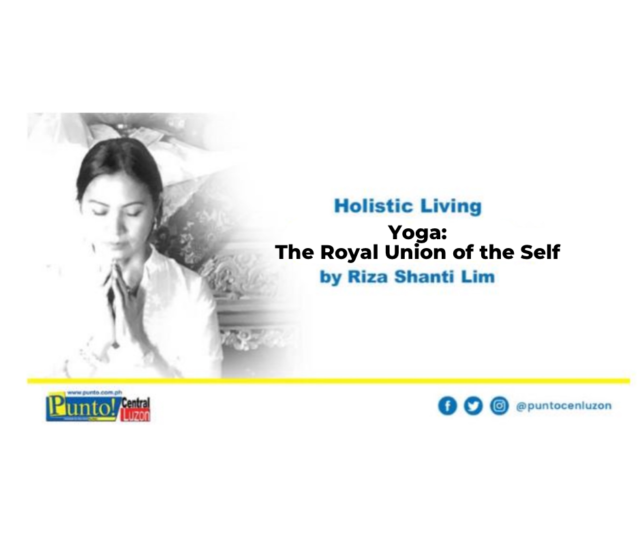The body is my temple and asanas are my prayers, BKS Iyengar
IT HAS been twenty years since I started my yoga practice. During those times, my ever loyal and dependable companion, who witnessed my joys and falls, achievements and pains, frustrations and tears, is my yoga mat – my angel in disguise.
Whenever I step on my mat, I feel like being taken to another plane. My sense of balance and stability awakens, my strength and faith restored, agility and focus empowered, it grounds me back to my true self, which brings a profound contentment in my life.
Most people who seek to practice yoga are in search either of relaxation, peace, or an answer to the challenges they are dealing with. They expect the practice to liberate them from the mental, physical, and emotional agony which is usually accompanied by depression and feeling of helplessness.
The word yoga is derived from the Sanskrit word “yuj,” which means “to join or unite,” it is related to the English word “yoke.” It is a spiritual discipline, a way of life, not a cult or religion.
Yoga is the union of the body, mind, and spirit. It is like music – the rhythm of the body, the melody of the mind, and the harmony of the soul create the symphony of life. It is a quest of the spirit to spark the divinity within. A spiritual activity, not an aerobic or gymnastics exercise.
Yoga transforms the way we see things, but doesn’t change things. It teaches us how to let go of what not be endured and endure what cannot be cured.
Yoga allows you to find a new kind of freedom that you may not have even known existed. It is a flowing movement supported with conscious knowing. Yoga is light and as you better your practice, the flame becomes brighter.
It is a spiritual state of being, for which the elements and forces of the cosmos move in harmony with you. It unites your individuality with the divine intelligence of the universe, the land of possibilities.
The eightfold path of yoga
Maharishi Patanjali, a sage who compiled Yoga Sutras, made an emphasis on the eight branches of yoga. A strictly observed discipline by the ancient yogis: Yama – social conduct and moral behavior (non-violence, no killings, promotes vegetarianism); Niyama – personal observances/duties (what do you do when no one is looking?); Asanas – yoga poses; Pranayama – breath control; Pratyahara – the withdrawal of external senses and draw the senses inwards; Dharana, the mastery of concentration; Dhyana – meditation; and Samadhi – pure bliss/enlightenment.
Sithilikarana vyayama or body loosening exercises, kriyas or detoxification methods, bhandas or muscular locks, mudras or hand gestures, prayers/chants, are also part of yoga.
The core objective of the idea, is to become a light yourself. To cease all the restless chatter in your mind – not just during your practice on your mat, but to carry that state, in everything that you do. To be free from the traps of worldly desires, to get attuned with the boundless ecstasy of silence, to intoxicate with the nectar of love within, to gain much more than the most precious treasures found on earth, for yours belong to heaven.
OM Samadhi.





